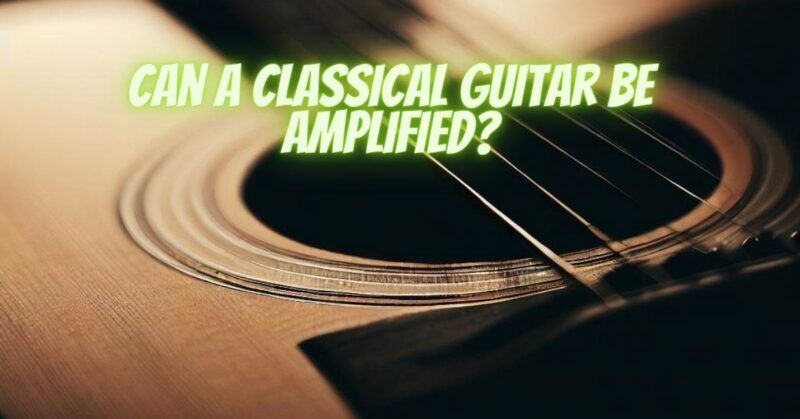The mellifluous tones of a classical guitar have captivated listeners for centuries, but what if you could share those enchanting sounds with a larger audience? Amplifying a classical guitar might seem like a modern twist on a timeless instrument, but it’s a practice that opens up new avenues for musical expression. This article delves into the world of amplifying classical guitars, exploring the techniques, considerations, and benefits of bringing this traditional instrument into the amplified realm.
Preserving Acoustic Beauty:
Classical guitars are revered for their rich, warm, and resonant acoustic sound. These instruments produce music that reflects centuries of tradition and craftsmanship. However, in certain performance settings – whether it’s a concert hall, outdoor event, or a recording studio – the unamplified sound of a classical guitar might struggle to reach every listener’s ears with its intended clarity and nuance.
Amplification Techniques:
Amplifying a classical guitar involves carefully capturing and projecting its natural acoustic qualities. Here are some common techniques used to achieve this:
- Microphone Placement: Placing a high-quality microphone near the soundhole or above the guitar’s body can capture the intricate tonal characteristics. However, microphone placement requires careful experimentation to avoid feedback and achieve the desired sound balance.
- Piezo Pickups: Piezo pickups are a popular choice for classical guitar amplification. These pickups are placed under the saddle or on the bridge of the guitar, converting string vibrations into electrical signals. They offer a clean and direct signal but might require external processing to replicate the guitar’s natural resonance.
- Internal Microphone Systems: Some classical guitars come equipped with internal microphone systems that blend the sound of a microphone with the convenience of a pickup. These systems capture the guitar’s internal vibrations and often offer adjustable EQ controls.
Considerations and Challenges:
Amplifying a classical guitar comes with its set of considerations and challenges:
- Feedback Control: Amplified classical guitars can be prone to feedback – that unwanted howling sound caused by the interaction between the microphone, amplifier, and speaker. Proper microphone placement, soundhole covers, and using feedback suppressors can help mitigate this issue.
- Tonal Fidelity: Preserving the natural tone of a classical guitar while amplifying it is a delicate balance. Players and sound engineers need to work together to achieve a sound that retains the instrument’s character.
- Playability: Adding pickups or microphone systems might slightly alter the guitar’s feel and response. It’s important to choose amplification methods that don’t hinder the guitarist’s technique.
Benefits of Amplification:
Amplifying a classical guitar extends its sonic reach and offers several advantages:
- Versatility: Amplification allows classical guitarists to perform in a wider range of venues and collaborate with other amplified instruments.
- Audience Engagement: By projecting the sound more effectively, amplified classical guitars ensure that the audience experiences the subtleties and nuances of the performance.
- Effects Exploration: Amplification opens the door to experimenting with effects and signal processing, enabling artists to craft unique sonic landscapes.
Amplifying a classical guitar is not a departure from tradition but an evolution of it. It’s a way to ensure that the captivating beauty of classical guitar music reaches a diverse and appreciative audience. By carefully selecting amplification techniques and collaborating with skilled sound engineers, classical guitarists can merge the authenticity of their instrument’s heritage with the excitement of modern technology, creating a harmonious blend that resonates with audiences old and new.


